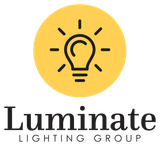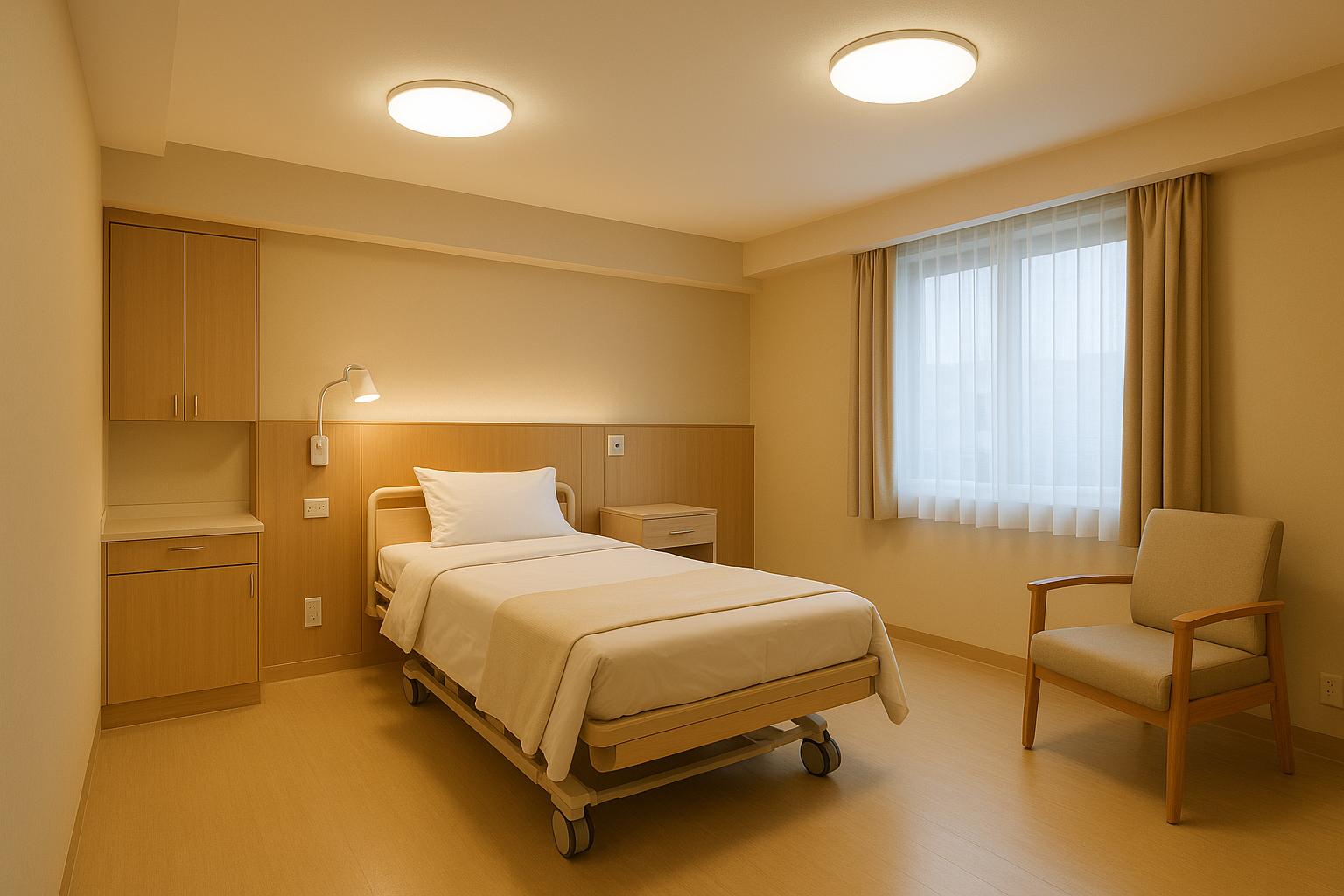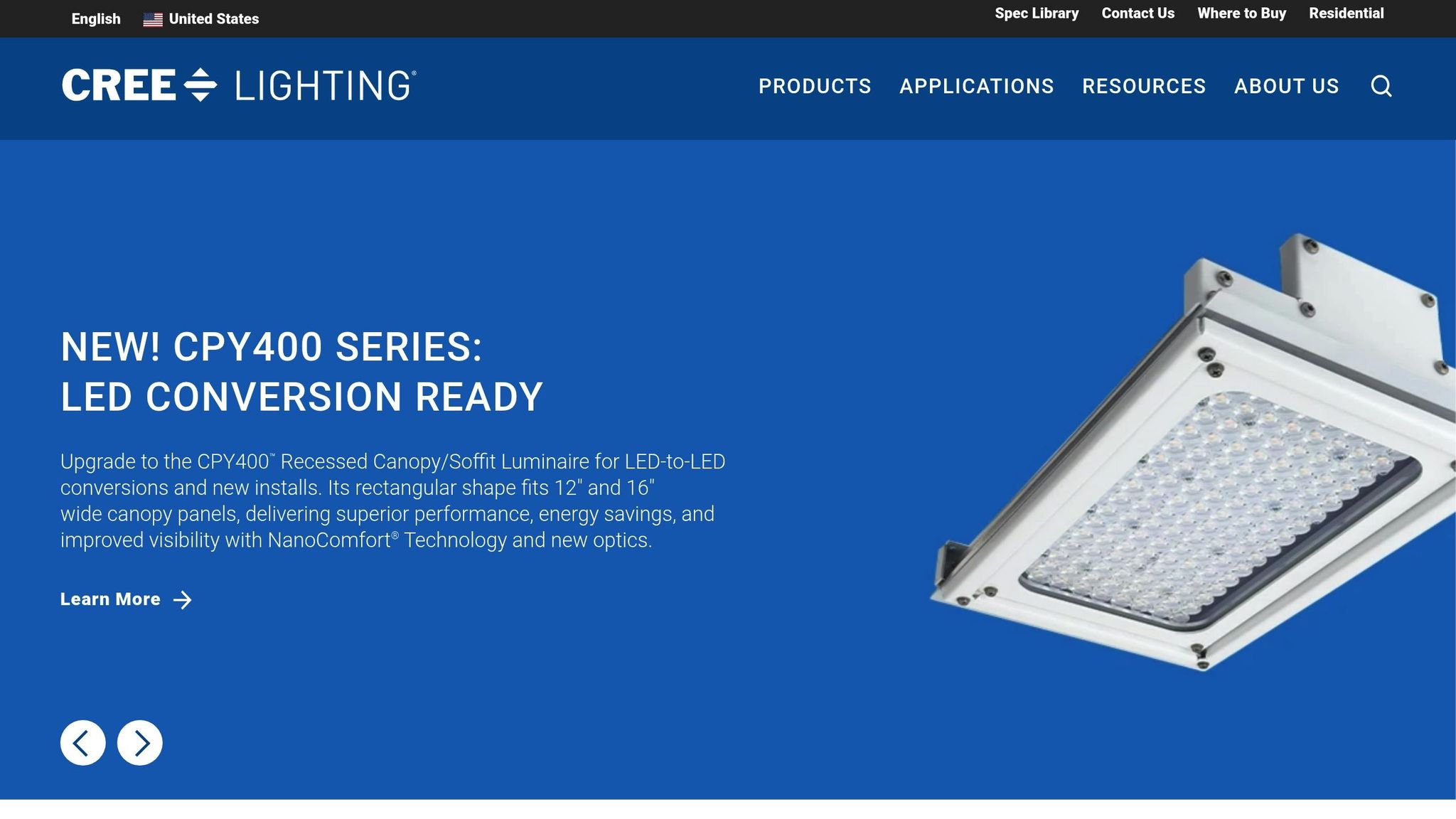Explore how energy-efficient lighting in patient rooms enhances recovery, boosts staff performance, and reduces costs with modern technologies.


Energy-efficient lighting in patient rooms isn't just about saving money - it improves patient recovery, supports staff performance, and reduces energy use. By using modern solutions like LEDs and smart controls, healthcare facilities can create comfortable spaces while cutting costs and meeting green initiatives. Here's what you need to know:
Switching to energy-efficient lighting is a smart investment for healthcare facilities, improving both care quality and operational efficiency.

Modern lighting in patient rooms isn’t just about energy efficiency - it’s about creating a space that feels comfortable and supportive for both patients and staff. A thoughtful lighting design uses layers to balance functionality, comfort, and energy savings. By combining these elements, patient rooms can become spaces that promote healing while also being practical and environmentally conscious.
Effective lighting in patient rooms relies on three main layers, each serving a specific purpose:
These layers work together to meet the room’s needs throughout the day. For instance, bedside lighting at night should be dimmed to around 5–10 foot-candles to protect sleep while still allowing safe movement.
Lighting systems in patient rooms should prioritize giving users control. Advanced systems let patients adjust lighting for activities like reading or resting, helping to create a more personalized and calming environment. Nurses can also benefit from these controls, using dimmed lights for nighttime checks to avoid disturbing sleep or switching to full brightness for emergencies or examinations with ease.
To meet the needs of everyone in the room - patients, family members, and healthcare providers - dedicated controls for ambient, task, and accent lighting are key. These systems can also incorporate automated features, such as turning lights off in unoccupied areas or adjusting brightness based on the time of day. This not only enhances comfort but also improves energy efficiency.
Natural light plays a big role in supporting patients’ circadian rhythms and boosting their mood, which can aid in recovery. However, using daylight effectively requires careful planning to address challenges like glare, heat, and privacy. Adjustable window treatments, such as blinds or shades, allow patients to control the amount of light entering the room. Positioning beds to take advantage of daylight, while avoiding direct glare on workspaces or equipment, can also make a difference.
To complement natural light, tunable LEDs can provide seamless transitions from bright daytime lighting to softer, sleep-friendly tones in the evening. This combination not only enhances comfort and supports circadian health but also reduces energy use. Daylight harvesting systems, which dim or turn off artificial lights when there’s enough natural light, are a great way to maximize these benefits.
Modern lighting systems are transforming patient rooms into spaces that are not only energy-efficient but also conducive to healing. These advancements help healthcare facilities lower utility bills while enhancing patient comfort and satisfaction. Among these technologies, LED lighting has emerged as a standout solution.
LED lighting uses 50–75% less energy than traditional fluorescent or incandescent bulbs, all while delivering high-quality illumination that supports patient care and comfort. For instance, swapping a standard 36W fluorescent fixture for a 15W LED setup can more than halve electricity usage and reduce cooling demands. Many healthcare facilities report energy savings of 50–80% after upgrading to LED systems, resulting in noticeable monthly cost reductions.
"Upgrading to energy-efficient LED lighting is one of the fastest ways to lower operating costs." – Luminate Lighting Group
Beyond energy savings, LEDs boast impressive longevity, often lasting 50,000 hours or more. This reduces the frequency of maintenance, minimizing disruptions and cutting costs over time. Their excellent color rendering, with CRI ratings typically between 80 and 90 or higher, ensures accurate color perception - critical in clinical environments - while also creating a warm and inviting atmosphere. Additionally, LEDs turn on instantly, eliminating the warm-up time associated with fluorescent fixtures, which is especially valuable in emergencies.
Smart lighting controls take energy efficiency and patient comfort to the next level by ensuring lights operate only when needed. For example, occupancy sensors automatically switch lights off in unoccupied rooms, cutting unnecessary energy use. Daylight harvesting systems adjust artificial lighting based on natural light levels, while dimming controls allow for smooth transitions between bright task lighting and softer ambient settings. Advanced systems can even integrate with building management platforms, providing facility managers with detailed energy usage data and remote monitoring capabilities.
Daylighting and retrofitting further enhance energy efficiency when paired with smart controls. Large windows, skylights, and light shelves are used to bring natural light into patient rooms, creating a soothing environment while reducing reliance on artificial lighting. When combined with systems that adjust to available daylight, these strategies support both energy savings and patient well-being.
For facilities looking for quick energy upgrades, retrofitting existing lighting systems is an effective option. Troffer retrofit kits, for instance, can convert fluorescent fixtures to LED technology, delivering up to 50% energy savings with minimal installation effort. Facilities with older T12 or T8 fluorescent fixtures can see immediate improvements by upgrading to high-efficiency LED options. As an intermediate step, using Super T8 fluorescent lamps can cut energy use by 20–30%, offering a practical bridge toward full LED adoption.
| Technology | Energy Savings | Lifespan | Color Rendering | Payback Period |
|---|---|---|---|---|
| LED | 30–50% | 50,000+ hours | CRI ≥ 80 | 1–2 years |
| Super T8 | 20–30% | 20,000+ hours | CRI 80–90 | 2–3 years |
| Incandescent | Baseline | 1,000–2,000 hours | CRI 100 | N/A |
Professional retrofitting services can simplify the upgrade process for healthcare facilities. From initial energy audits to detailed design, installation, and post-installation support, these services ensure maximum energy savings and long-term performance. Additionally, many retrofit projects qualify for utility rebates and tax incentives, making them even more cost-effective. Together, these lighting solutions create an energy-efficient, patient-centered system that enhances care while keeping operational costs in check.
Switching to energy-efficient lighting in patient rooms takes thoughtful planning and a smart use of financial incentives. When done right, healthcare facilities can cut energy costs significantly while ensuring a solid return on investment.
The first step in the process is conducting a detailed energy audit. This involves analyzing current systems, tracking energy usage, and pinpointing areas for improvement. The audit provides essential data - like fixture types, usage behaviors, and high-energy-use zones - that help identify the best solutions, such as LED retrofits and advanced lighting controls.
After gathering this information, facilities can create a photometric layout using lighting simulation software. This step helps to model light levels, uniformity, and glare, ensuring the lighting setup is optimized for patient rooms. Factors like room size, surface reflectance, and tasks such as reading or medical exams are carefully considered during this phase.
The next stage involves selecting the right LED fixtures and controls. LEDs with tunable color and dimming capabilities, paired with smart controls that adjust lighting based on occupancy or daylight, are popular choices. These systems not only enhance patient comfort and support natural circadian rhythms but also reduce energy consumption.
To keep disruptions minimal during installation, a phased approach is often the way to go. Retrofit kits that work with existing fixtures make the transition smoother. Additionally, bringing in experienced lighting professionals can help tackle technical and regulatory challenges, ensuring the project stays on track.
Once the planning is done, financial incentives can make the project even more feasible. Facilities in the U.S. can tap into various programs to offset the costs of their upgrades. Utility rebates, for example, offer upfront discounts or reimbursements after installation for approved energy-efficient products. Depending on the location, these rebates can cover anywhere from 10% to 50% of project costs.
Another valuable resource is the 179D tax deduction. This program allows eligible building owners to deduct up to $1.88 per square foot (as of 2025) for energy-efficient improvements, including lighting. To qualify, facilities must provide documentation showing energy savings and meet ASHRAE standards, often requiring third-party certification. Additionally, state and local programs may offer further incentives to boost savings.
| Incentive Type | Coverage | Requirements | Typical Savings |
|---|---|---|---|
| Utility Rebates | 10–50% of costs | Approved products | $0.50–$2.00 per sq ft |
| 179D Tax Deduction | Up to $1.88 per sq ft | ASHRAE compliance | $1.00–$1.88 per sq ft |
| State Programs | Varies by location | Energy targets | 5–25% additional |
Collaborating with specialized lighting firms, such as Luminate Lighting Group, simplifies the entire upgrade process. These experts handle everything - from conducting energy audits and designing custom solutions to managing installations and securing financial incentives. Their expertise ensures compliance with healthcare standards while reducing administrative headaches.
"Luminate Lighting Group exceeded my expectations with their exceptional professionalism, prompt attention to detail, clear communication, and responsive team, which made the entire LED Lighting Installation process seamless. Their dedication to delivering high-quality Commercial Lighting solutions ensured that our needs were met expertly and efficiently, every step of the way."
– T. Fiddler, Project Manager
Lighting professionals do more than just install fixtures. They assist with rebate applications, manage the necessary paperwork, and ensure reimbursements are processed on time to maximize financial returns. Post-installation, they provide support by testing systems, managing warranties, and offering maintenance advice to ensure the lighting setup remains efficient for years to come.
Success is measured through key metrics like energy use before and after upgrades, maintenance costs, and feedback from patients and staff. Tracking utility bills, rebate amounts, and tax deductions provides a clear picture of the financial benefits. For instance, one hospital that upgraded patient rooms with LED panel lights and smart controls saw a 40% drop in lighting energy use and reported higher patient satisfaction - all while achieving a payback period of under three years.
Switching to energy-efficient lighting offers a range of benefits, from cutting costs to supporting patient well-being and advancing sustainability goals. For instance, LED retrofits reduce maintenance expenses with their longer lifespan, and facilities can take advantage of utility rebates and federal tax deductions through the 179D program.
Modern lighting design plays a key role in patient comfort and recovery. Tunable LED systems, which adjust color temperature throughout the day, help maintain natural circadian rhythms - essential for healthy sleep cycles during hospital stays. Additionally, giving patients control over their lighting - whether dimming for rest or brightening for reading - can significantly enhance their comfort and aid recovery.
Energy-efficient lighting also aligns with sustainability objectives. By consuming less electricity, healthcare facilities reduce their carbon footprint and meet green building certification standards. LEDs are safer too, as they don’t flicker and contain no toxic materials, creating a healthier environment for both patients and staff.
To maximize these benefits, start with a thorough energy audit to identify areas for improvement. Partner with lighting professionals who specialize in healthcare to ensure compliance with standards, secure financial incentives, and minimize disruptions during installation. A layered lighting strategy - incorporating ambient, task, and accent lighting - balances energy savings with the diverse needs of patients and staff.
Ultimately, upgrading to energy-efficient lighting is more than just a cost-saving measure - it’s an investment in patient care and operational efficiency. With typical payback periods of less than three years and long-lasting benefits, it’s one of the smartest improvements healthcare facilities can make in their patient rooms.
Energy-efficient lighting in patient rooms isn't just about cutting costs - it can make a real difference in patient recovery and comfort. Using systems like LED fixtures with adjustable brightness and color temperature, hospitals can create a soothing and adaptable atmosphere. This kind of lighting supports natural circadian rhythms, reduces stress, and encourages better sleep, all of which are essential for healing.
Beyond patient comfort, these lighting solutions also have practical advantages. They minimize glare and provide steady, reliable illumination, making it easier for both patients and healthcare staff to navigate the space safely and effectively. Plus, by using less energy, these systems help reduce utility expenses and support sustainability goals - benefiting the environment and the healthcare facility’s bottom line.
Healthcare facilities have a great opportunity to cut costs by switching to energy-efficient lighting systems, thanks to a variety of financial incentives. For instance, utility rebates can help lower the initial investment, and there are additional programs aimed at promoting energy conservation.
At Luminate Lighting Group, we make this transition easier. We handle the heavy lifting - identifying eligible incentives, pre-qualifying for rebates, managing all the paperwork, and ensuring you get reimbursed on time. This way, facilities can save money, enhance lighting quality, and align with their sustainability objectives.
Healthcare facilities can improve patient comfort and reduce energy usage by thoughtfully combining natural and artificial lighting. Designing patient rooms to take advantage of daylight - through large windows and light-diffusing materials - can create a serene and inviting atmosphere.
For artificial lighting, energy-efficient LED fixtures with adjustable brightness and color temperature work well alongside natural light, ensuring a steady and calming environment throughout the day. Adding automated features like dimmers and occupancy sensors takes it a step further, adjusting lighting levels based on room activity and the amount of daylight, all while cutting down on energy consumption.